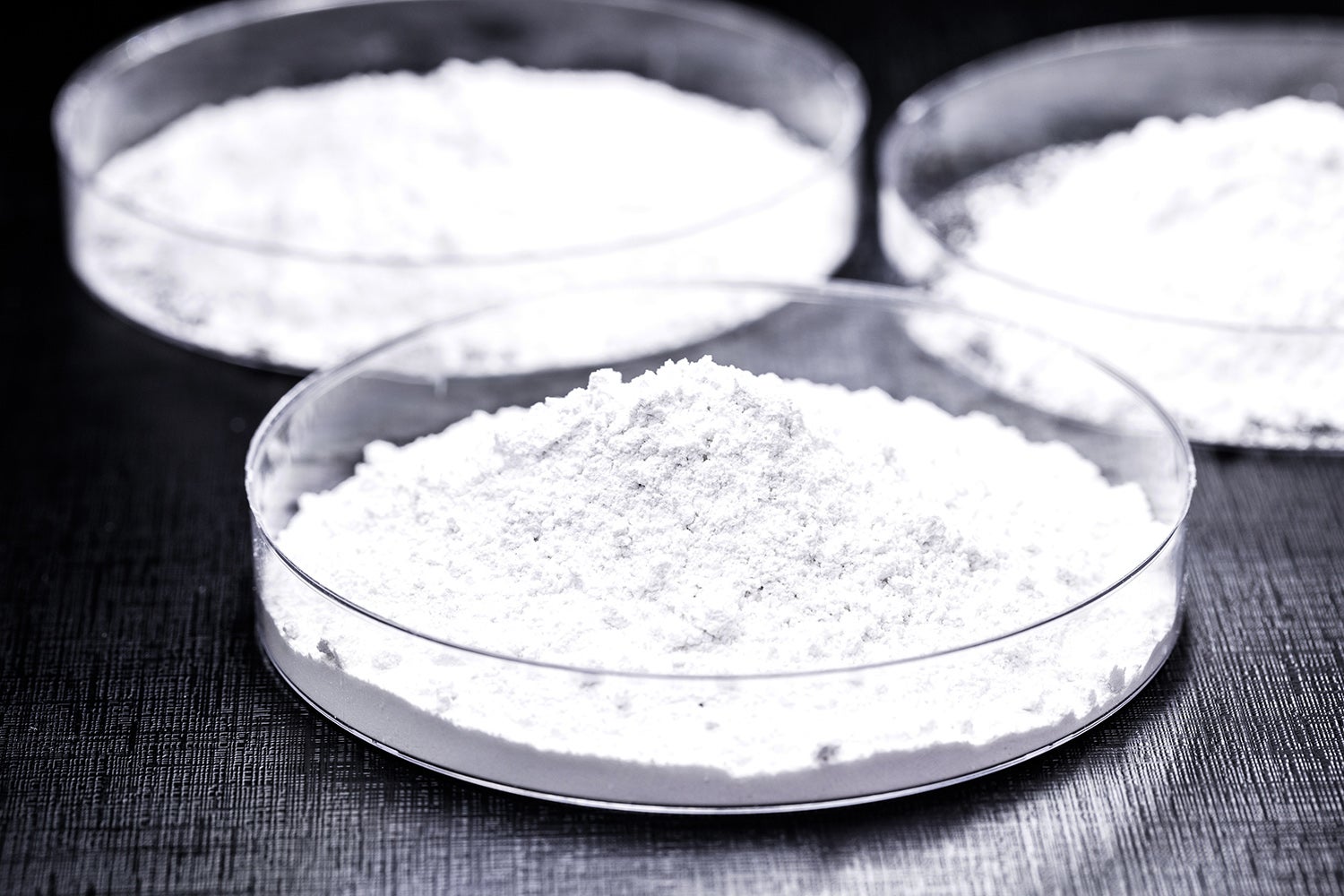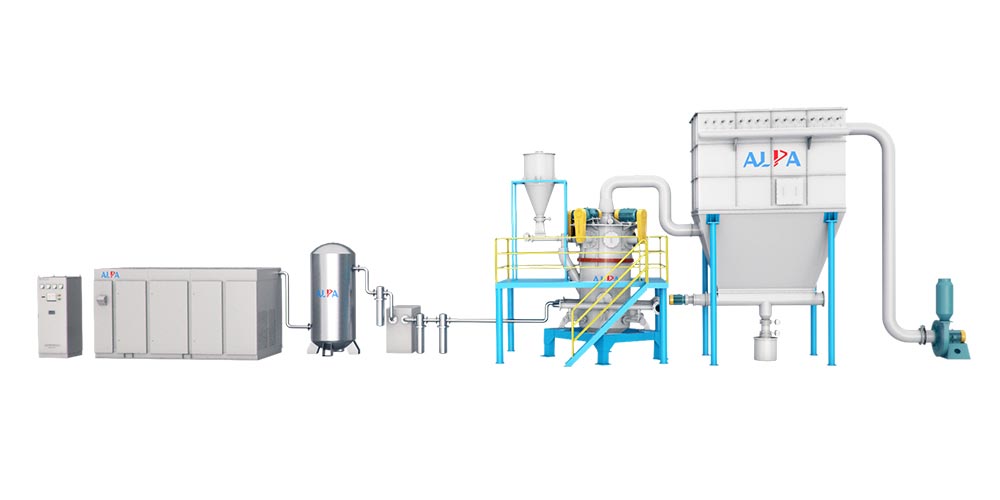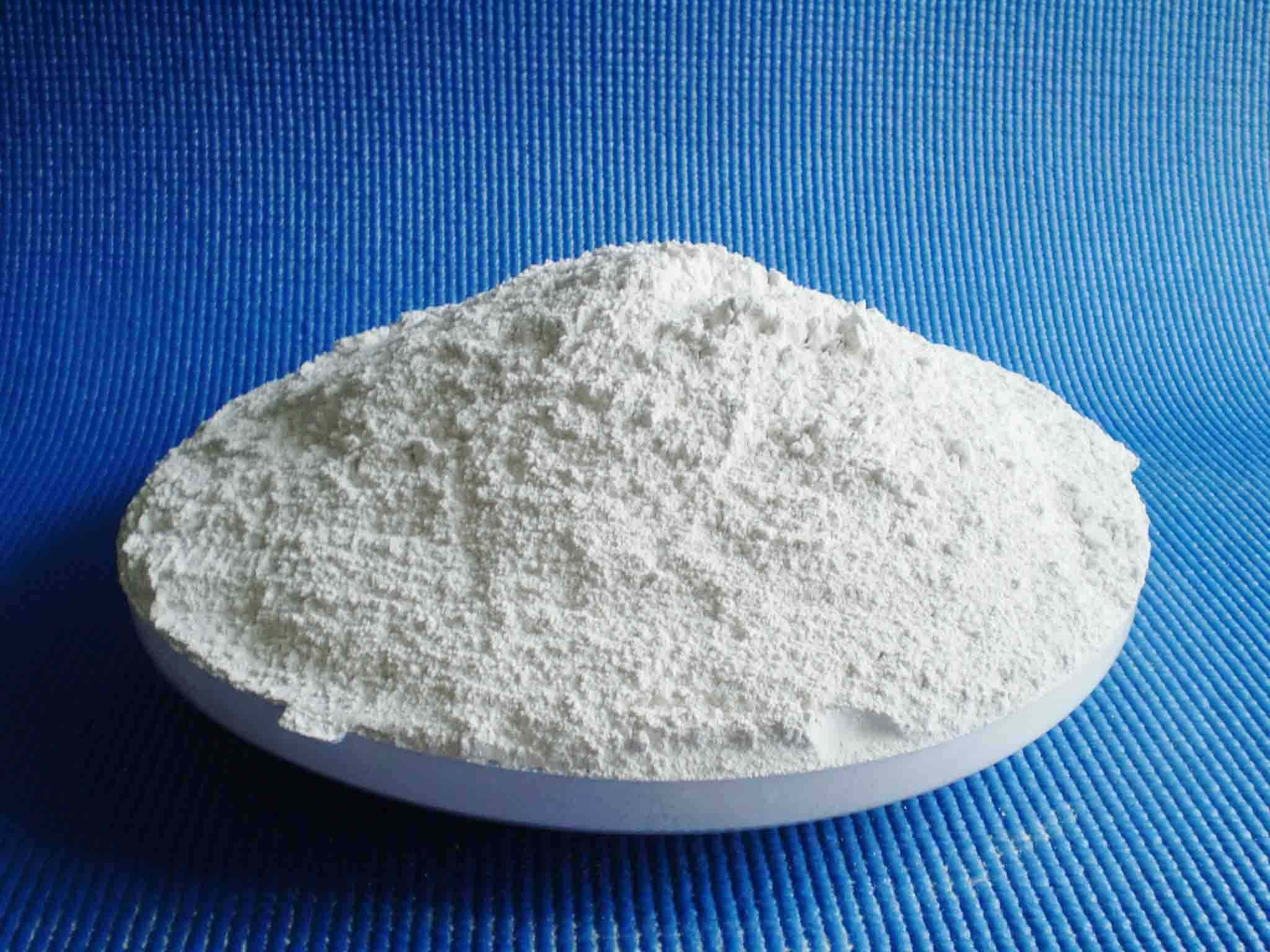Application of modified silica powder
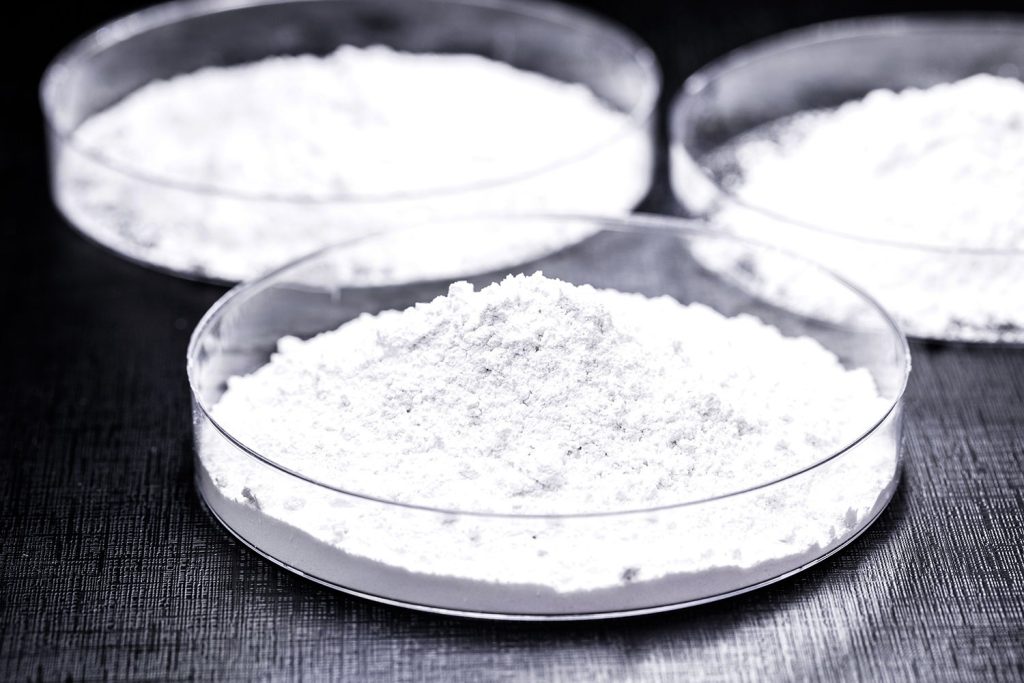
Silica powder is a very important inorganic non-metallic functional filler that can be compounded with organic polymers and improve the overall performance of composite materials. It is widely used in electrical and electronic, silicone rubber, coatings, adhesives, potting materials and other fields.
Silica powder itself is a polar, hydrophilic substance. It has different interface properties from the polymer matrix, poor compatibility, and is often difficult to disperse in the base material. Therefore, in order to make the composite material more excellent, it is usually necessary to modify the surface of silica powder and purposefully change the physical and chemical properties of the surface of silica powder according to the needs of the application, so as to improve its compatibility with organic polymer materials and meet its dispersion and fluidity requirements in polymer materials.
Copper clad laminate
Copper clad laminate is an electronic basic material made by impregnating glass fiber or other reinforcing materials with a resin matrix, adding different fillers, and covering one or both sides with copper foil through processes such as glue adjustment and impregnation, and then hot pressing. The addition of modified silica powder can reduce the production cost of copper clad laminates and improve their heat resistance, conductivity and mechanical properties.
Rubber
Rubber is a highly elastic polymer material with reversible deformation. It can be widely used in electronics, automobiles, civil engineering, national defense, medical and health, and daily necessities. In the process of rubber preparation, adding a certain amount of inorganic filler can not only reduce the production cost of rubber, but also significantly improve the comprehensive physical properties and dynamic mechanical properties of rubber composite materials.
Plastic
Silicon powder can be used as a filler in materials such as polyethylene (PE), polyvinyl chloride (PVC), polypropylene (PP), polyphenylene ether (PPO) in the process of making plastics. It is widely used in many fields such as construction, automobiles, electronic communication insulation materials, agriculture, daily necessities, national defense and military.
Epoxy molding compound
Epoxy molding compound is a molding compound made of a variety of additives. It is a key material for electronic packaging and accounts for more than 97% of the market for microelectronic packaging. It can be widely used in semiconductors, consumer electronics, integrated circuits, aviation, military and other packaging fields.
Epoxy casting
Epoxy insulation casting material is a liquid or viscous polymerizable resin mixture made of resin, curing agent, filler, etc. At the pouring temperature, the castable has good fluidity and less volatiles, fast curing, and small shrinkage after curing. The epoxy resin formed after the castable is an insulating product that integrates multiple functions such as insulation, moisture-proof, mildew-proof, anti-corrosion, fixation and isolation.
Electronic potting glue
Potting glue is often used in electronic components, mainly for bonding, sealing, barrier and protection. It is liquid before curing and has a certain fluidity. The viscosity of the glue varies according to the material, performance and production process of the product, and its use value can only be realized after the glue is completely cured.
Artificial quartz stone
Silicon powder is used as a filler in artificial quartz stone, which can not only reduce the consumption of unsaturated resin, but also improve the wear resistance, acid and alkali resistance, mechanical strength and other properties of artificial quartz plate.
Different application fields of silicon micropowder have different quality requirements. Therefore, when choosing the application of silicon micropowder, it should be combined with the needs of downstream industries, and comprehensive cost, efficiency, performance and other factors should be considered to select the appropriate silicon micropowder type and modifier and formula. With the continuous improvement of my country's economy and society, at present, the application research of modified silicon micropowder will mainly focus on high-end copper clad laminates, high-performance adhesives, insulation materials and other high-tech fields produced with spherical silicon micropowder as raw materials. Refinement and functional specialization will be the mainstream direction of modified silicon micropowder application in the future.
Common powder surface modification equipment
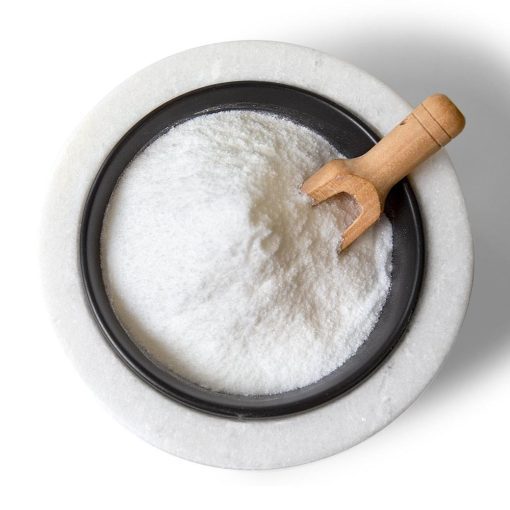
Factors that affect the powder modification effect include the properties of the powder raw materials, modification methods, modification processes, modifiers and their formulas, and modification equipment. When the powder modification process and modifier or formula are determined, the modification equipment becomes the key factor affecting the powder modification effect.
Powder modification equipment mainly undertakes three responsibilities: one is mixing, the second is dispersion, and the third is that the modifier melts in the equipment and combines well with the powder. In addition, the powder modification equipment is also required to have less energy consumption and wear, no dust pollution, simple equipment operation, and stable operation.
1. HEM high-efficiency hybrid modifier
The HEM high-efficiency hybrid modifier has six groups of stirring paddles, 24 moving knives and guide plates. The materials are fully mixed repeatedly in the bin and repeatedly act with the additives, so that the materials absorb the additives, so that the additives are evenly coated on the surface of the powder.
2. High-speed heating mixer
The high-speed heating mixer is one of the commonly used equipment for chemical coating and modification of inorganic powders, such as inorganic fillers or pigments. It is a mixing equipment widely used in the plastic products processing industry.
3. SLG continuous powder surface modifier
The SLG continuous powder surface modifier is mainly composed of a thermometer, a discharge port, an air inlet, an air duct, a main machine, a feed port, a metering pump and a feeder.
4. High-speed airflow impact surface modifier
The main structure is mainly composed of high-speed rotating rotor, stator, circulation loop, wing, jacket, feeding and discharging device. The whole system consists of mixer, metering feeding device, high-speed airflow impact surface modifier, product collection device, control device, etc.
5. Horizontal paddle mixer
The horizontal paddle mixer is an intermittent powder surface modifier with horizontal cylinder and single-axis multi-paddle as structural characteristics. It is mainly composed of transmission mechanism, main shaft, cylinder, end cover, etc.
6. Turbine (rotary) mill
It is mainly composed of machine base, drive part, crushing chamber, gap adjustment and inlet and outlet. The characteristic is that the heat generated by the ultrafine grinding process (50℃~60℃) is used to introduce the crushed ultrafine powder into the vortex mill, and the pre-heated and melted stearic acid modifier is metered to carry out continuous surface modification.
7. Turbo mill
The Turbo mill is mainly composed of a depolymerization wheel, a discharge door, an air inlet, a classifier, a feed port, a multi-channel surface dispersant inlet and a feeder.
Finally, the selection principles of surface modification equipment are summarized as follows:
(1) Good dispersibility of powder and surface modifier. Only with good dispersibility can the powder and surface modifier have a relatively equal opportunity and effect, and the amount of surface modifier can be reduced.
(2) The modification temperature and residence time are adjustable within a certain range.
(3) Low energy consumption per unit product and low wear. In addition to the modifier, the main cost of surface modification is energy consumption. Low-energy modification equipment can reduce production costs and improve product competitiveness; low wear can not only avoid the contamination of modified materials, but also improve the operation efficiency of the equipment and reduce operating costs.
(4) Less dust pollution. The escape of dust during the modification process not only pollutes the production environment, but also causes material loss, resulting in increased product production costs. Therefore, the dust pollution of the equipment must be investigated.
(5) Continuous production, simple operation, and low labor intensity.
(6) Smooth and reliable operation.
(7) High level of automatic control, which can automatically adjust the processing volume, modifier addition amount, modification temperature, residence time and other factors according to the properties of the material and the properties of the surface modifier.
(8) The production capacity of the equipment should be consistent with the designed production scale. When the designed production scale is increased, large-scale equipment should be selected as much as possible to reduce the number of equipment to reduce the floor space, production costs and facilitate management.
Learn about general powder processing equipment production line

Powder processing equipment is an indispensable core component in modern industrial production. They run through multiple key process flows such as powder raw material transportation, grinding, classification, surface treatment, solid-solid separation, liquid-solid separation, gas-solid separation, drying, mixing, granulation, molding, roasting/calcining, cooling, packaging, and warehousing.
Feeding/Feeding: Vibrating feeder, Electromagnetic vibrating feeder, Screw feeder, Disc feeder, Rotary feeder
Conveying: Belt conveyor, Chain conveyor, Bucket elevator, Pneumatic conveyor, Hydraulic conveyor, Screw conveyor
Commonly used industrial powder and particle conveying equipment
1 Screw conveyor
2 Pipe chain conveyor
3 Positive pressure pneumatic conveying equipment
Grinding Mill
Jaw crusher: uses the movable jaw to periodically approach and leave the fixed jaw to crush materials.
Cone crusher: uses the swinging movable cone to periodically approach and leave the fixed cone to crush materials.
Hammer crusher: uses the impact generated by the rotation of the hammer head hinged on the rotor to crush materials.
Impact crusher: uses the impact of the plate hammer rigidly fixed on the rotor and the impact plate to crush materials.
Shear crusher: uses the relatively fast movement between the moving and static sharp blades to crush materials.
Roller mill: uses synchronously rotating extrusion rollers to crush materials.
Impact mill: uses horizontal high-speed rotating impellers to make materials move centrifugally at high speed, and collide and crush each other in the vortex chamber.
Ball mill/tube mill: uses the impact, grinding, and shearing of the grinding media in the rotating cylinder to crush materials. The grinding media are spherical, short columnar, rod-shaped, etc.
Screening mill: Use a mill with a screening mechanism to crush and classify the crushed materials.
Vibration mill: Use the impact, grinding and shearing of the grinding media in the vibrating cylinder to crush the material.
Tower mill/vertical stirred mill: Use the impact, grinding and shearing of the grinding media driven by the vertical stirring mechanism to crush the material.
Horizontal stirred mill: Use the impact, grinding and shearing of the grinding media driven by the horizontal stirring mechanism to crush the material.
Vertical mill/wheel mill: Use the relative rotation of the grinding disc and the grinding roller to grind and crush the material, and classify the ground material, such as Raymond mill, Loesche mill, etc.
Ring roller mill: Use the revolution and rotation of the grinding ring (roller) to crush the material between the grinding ring and the grinding circle by impact, collision, shearing.
Horizontal roller mill: The rotating cylinder forces the material to be clamped between the cylinder wall and the high-pressure roller, and is repeatedly squeezed, ground, sheared and crushed.
Planetary mill: Use the impact and grinding of the grinding media driven by the revolution and rotation of the grinding cylinder to crush the material.
Colloid mill: The material is sheared and ground between the high-speed rotating teeth and fixed teeth and is effectively emulsified and dispersed.
Airflow pulverizer: The material is crushed by strong collision, impact and friction between the materials or between the materials and the wall of the device using high-speed airflow.
Heavy-duty grinder: The disc-shaped roller runs along the bottom track, repeatedly applying rolling and shearing to crush the material.
Sidewall grinder: The cylindrical roller is driven by the rotating shaft to rotate and the side wall produces an extrusion effect to crush the material.
Classifying
Screening machine: Classification is performed using screens, including horizontal screens, vibrating screens, resonance screens, drum screens, etc.
Fixed screen: Classification is performed using an inclined screen plate composed of parallel grid bars.
Gravity sedimentation classifier: Classification is performed using the difference in the final settling speed of particles in the fluid.
Cyclone: Under the action of centrifugal force, larger particles are thrown to the wall of the device and rotate downward to be discharged, and smaller particles rotate upward to be discharged to achieve classification.
Centrifugal powder classifier: uses the different movement trajectories of particles in the centrifugal field to achieve gas-solid separation or powder classification.
Cyclone powder classifier: uses a turntable to drive the blades to rotate for powder classification.
Rotor classifier: When the gas-solid two-phase flow passes through the gap between the blades of the high-speed rotor, large particles are thrown out in the direction of centrifugal force, thereby classifying.
Dispersion classifier: The material is dispersed and scattered in the dispersion area and then enters the classification area.
Surface modification (activation) of talc and its application in plastics and coatings

Talc is a hydrated silicate with a chemical formula of 3MgO·4SiO2·H2O. Its crystal shape can be flake, leaf, needle and block.
The structure of pure talc consists of a layer of brucite (magnesium hydroxide, MgO·H2O) sandwiched between two layers of silica, with the layers stacked on top of each other and adjacent talc layers bonded by weak van der Waals forces. When shearing is applied to it, the layers can easily slide against each other.
Talc is inert to most chemical reagents, does not decompose when in contact with acid, is a poor conductor of electricity, has low thermal conductivity and high thermal shock resistance, and does not decompose when heated to 900°C.
These excellent properties of talc make it a good filler and are widely used in the fields of plastics and coatings, but the hydrophilic surface of talc limits its application in some hydrophobic fields. In order to further improve its performance and expand its application areas, surface modification is necessary.
1. Surface modification methods and commonly used modifiers for talc
(1) Commonly used surface modifiers for talc
In order to make talc better bonded with polymers, there are two main types of modifiers currently used for modification:
Coupling agents: mainly titanates, aluminates, silanes and stearic acids. Titanates are more commonly used. Their molecular structure is R´-O-Ti-(O-X-R-Y)n, where R´O- can react with the chemical structure of the filler surface, R is a long-chain entangled group with a fat or aromatic structure, which can improve the compatibility between the polymer and the filler, and Y is an active reactive group that can crosslink or bond in the polymer filling system.
Surfactants: mainly sodium dodecylbenzene sulfonate, sodium dodecyl sulfonate, dodecyltrimethylammonium bromide, dodecyltrimethylammonium chloride, sodium olefin sulfonate, etc., which have the same effect as coupling agents in improving the compatibility between polymers and fillers, but their mechanism of binding to the filler surface is different from that of coupling agents.
(2) Surface modification methods of talcum powder
Surface coating modification: Covering the surface of the particles with surfactants to give the particles new properties is a common method nowadays.
Mechanochemical method: A modification method that uses crushing, friction and other methods to enhance surface activity. This method is to crush and rub relatively large particles to make them smaller.
External film modification: A method of uniformly coating a layer of polymer on the surface of the particles to change the surface properties of the particles. For talcum powder, it can be first crushed and activated, then adsorbed with surfactants under certain conditions, and then adsorbed with monomers through surfactants, and finally the monomers undergo polymerization to achieve the effect of surface coating.
Local active modification: Use chemical reactions to form different functional groups on the surface of particles to achieve the purpose of surface modification.
High-energy surface modification: Use high-energy discharge, ultraviolet rays, plasma rays, etc. to modify the surface of particles. This method uses the huge energy generated by high-energy discharge, ultraviolet rays, plasma rays, etc. to modify the surface of particles, making their surfaces active. Improve the compatibility of particles and polymers.
Precipitation reaction modification: modification using precipitation reaction. This method uses the precipitation effect to coat the surface of particles to achieve the modification effect.
2. Application of talcum powder in the field of plastics
Talc powder fills plastics to improve the rigidity, dimensional stability, and lubricity of products, prevent high-temperature creep, reduce wear on molding machinery, and make the polymer improve hardness and creep resistance through filling while the impact strength remains basically unchanged. If handled properly, it can improve the heat shock resistance of polymers, improve the molding shrinkage of plastics, the bending elastic modulus and tensile yield strength of products.
Application in PP materials: This application is the most widely studied and most widely used. It is now widely used in automotive parts, such as automotive bumpers, engine peripheral parts, air conditioning parts, dashboards, headlights, chassis, pedals and other parts.
Application in automobiles: PP materials have a wide range of sources, low density, and can be modified to improve their physical and chemical properties. It can reduce costs, reduce weight, and reduce fuel consumption without reducing mechanical properties. For example, the automotive cooling fan injected with PP materials filled with talcum powder is not only light in weight and low in noise, but also improves cooling efficiency.
23 Application Fields of Kaolin
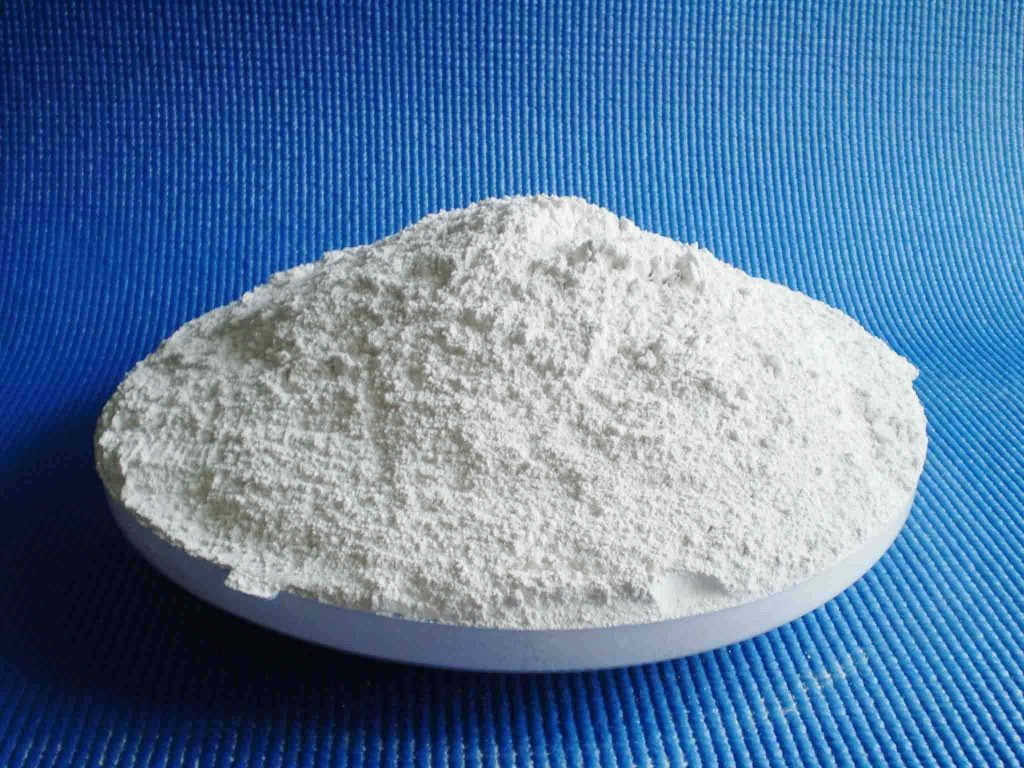
(1) Ceramic industry
The ceramic industry is the earliest industry to use kaolin and the industry with the largest amount of kaolin. The general amount is 20% to 30% of the formula. The role of kaolin in ceramics is to introduce Al2O3, which can improve its chemical stability and sintering strength.
(2) Rubber
Filling kaolin into the colloidal mixture of rubber can enhance the chemical stability, wear resistance and mechanical strength of the rubber, prolong the hardening time, and improve the rheological properties, mixing properties and vulcanization properties of the rubber, increase the viscosity of the unvulcanized product, and prevent it from sinking, collapsing, sagging, deformation, flat tubes, etc.
(3) Paint pigments
Kaolin has been used as a filler for paints and varnishes for a long time because of its white color, low price, good fluidity, stable chemical properties and large surface cation exchange capacity.
(4) Refractory materials
Kaolin has good refractory properties and is often used to produce refractory products.
(5) Catalysts
Kaolin can be used directly or after acid or alkali modification as a catalyst matrix, or it can be synthesized into molecular sieves or catalysts containing Y-type molecular sieves through in-situ crystallization technology.
(6) Cable materials
The production of high-insulation cables requires the addition of excessive amounts of electrical performance improvers.
(7) Lubrication field
Kaolin has a layered structure and small particle size, which makes it have good lubricity.
(8) Heavy metal wastewater treatment
Kaolin has abundant reserves, wide sources and low prices. Its natural two-dimensional layered structure gives it a large specific surface area and good adsorption performance.
(9) Secondary resource utilization
Modified kaolin is also used in the field of secondary resource utilization to recover metal ions.
(10) Treatment of degraded oil products
Currently, the most commonly used method for treating degraded oil products is adsorption regeneration, which is mainly made of silica-alumina adsorbents made from processed bentonite, kaolin, etc.
(11) Building phase change thermal storage materials
Using dimethyl sulfoxide (DMSO) as an intercalation agent, the coal-based kaolin was intercalated and modified by the melt intercalation method, and the intercalated kaolin was used as the matrix.
(12) Solar energy storage materials
Using kaolin and sodium stearate as raw materials, a new type of kaolin/sodium stearate phase change heat storage material is prepared.
(13) Molecular sieves
Kaolin is abundant in reserves, cheap in price, and has a high aluminum-silicon content, making it a good raw material for preparing molecular sieves.
(14) Kaolinite organic intercalation materials
The intercalation method generally involves inserting organic molecules or layered polymers into layered inorganic materials to prepare intercalation composite materials.
(15) Nanomaterials
Due to their special size, nanomaterials have many unique properties, such as shielding ultraviolet rays and electromagnetic waves, and are used in military, communication, computer and other industries; adding nanoclay in the production process of water dispensers and refrigerators has antibacterial and disinfecting effects; adding nanoclay in ceramic production can increase the strength of ceramics by 50 times, and can be used to manufacture engine parts.
(16) Preparation of glass fiber
Kaolin is an important raw material for the preparation of glass fiber, providing Al2O3 and SiO2 for glass fiber.
(17) Mesoporous silica materials
Mesoporous materials are materials with pore sizes of 2 to 50 nm. They have large porosity, adsorption capacity and specific surface area.
(18) Hemostatic materials
Uncontrolled bleeding after trauma is the main cause of high mortality. Based on the natural hemostatic agent daizheshi's ability to control bleeding, a new type of iron oxide/kaolin nanoclay composite material was successfully synthesized.
(19) Drug carrier
Kaolin is a 1:1 layered crystal with a tight and uniform arrangement and a large specific surface area. It is often used as a sustained-release material.
(20) Antibacterial material
(21) Tissue engineering
Using kaolin as a binder, a three-dimensional MBG scaffold with excellent mechanical strength, mineralization ability and good cell response was successfully prepared using a modified polyurethane foam (PU) template method.
(22) Cosmetics
Kaolin can be used as an additive in cosmetics to enhance oil and water absorption, enhance the affinity of cosmetics to the skin, and improve the moisturizing function.
(23) Application of kaolin in the papermaking industry
In the papermaking industry, the international market for kaolin is relatively prosperous, and its sales volume exceeds that of ceramics, rubber, paint, plastics, refractory materials and other industries.
Surface modification of graphite anode materials
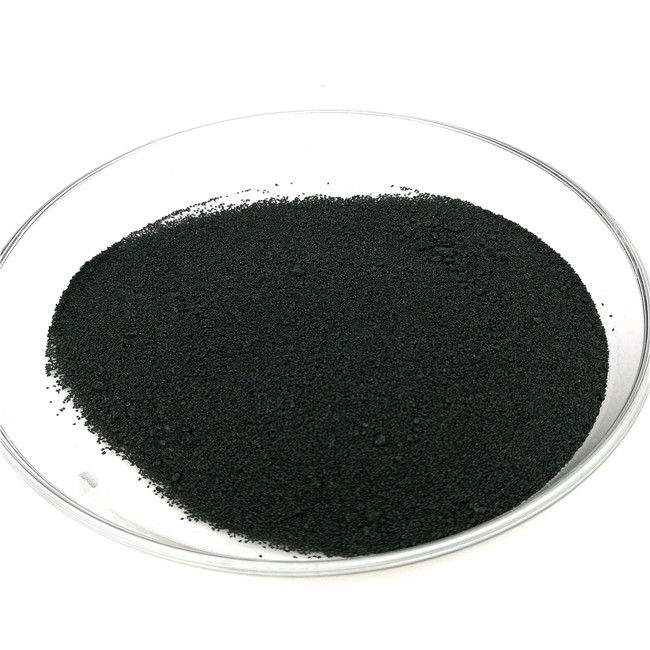
Graphite is the first negative electrode material for lithium-ion batteries to be commercially applied. After three decades of development, graphite is still the most reliable and widely used negative electrode material.
Graphite has a good layered structure, with carbon atoms arranged in a hexagonal shape and extending in a two-dimensional direction. As a negative electrode material for lithium-ion batteries, graphite has high selectivity for electrolytes, poor high current charge and discharge performance, and during the first charge and discharge process, solvated lithium ions will be inserted into the graphite interlayers, reduced and decomposed to produce new substances, causing volume expansion, which can directly lead to the collapse of the graphite layer and deteriorate the cycle performance of the electrode. Therefore, it is necessary to modify graphite to improve its reversible specific capacity, improve the quality of the SEI film, increase the compatibility of graphite with the electrolyte, and improve its cycle performance. At present, the surface modification of graphite negative electrodes is mainly divided into mechanical ball milling, surface oxidation and halogenation treatment, surface coating, element doping and other means.
Mechanical ball milling method
Mechanical ball milling method is to change the structure and morphology of the graphite negative electrode surface by physical means to increase the surface area and contact area, thereby improving the storage and release efficiency of lithium ions.
1. Reduce particle size: Mechanical ball milling can significantly reduce the particle size of graphite particles, so that the graphite negative electrode material has a larger specific surface area. Smaller particle size is conducive to the rapid diffusion of lithium ions and improves the rate performance of the battery.
2. Introduce new phases: During the ball milling process, graphite particles may undergo phase changes due to mechanical forces, such as the introduction of new phases such as rhombohedral phases.
3. Increase porosity: Ball milling will also produce a large number of micropores and defects on the surface of graphite particles. These pore structures can serve as fast channels for lithium ions, improving the diffusion rate of lithium ions and the charge and discharge efficiency of the battery.
4. Improve conductivity: Although mechanical ball milling itself does not directly change the conductivity of graphite, by reducing the particle size and introducing a pore structure, the contact between the graphite negative electrode and the electrolyte can be more sufficient, thereby improving the conductivity and electrochemical performance of the battery.
Surface oxidation and halogenation treatment
Oxidation and halogenation treatment can improve the interfacial chemical properties of graphite negative electrode materials.
1. Surface oxidation
Surface oxidation usually includes gas phase oxidation and liquid phase oxidation.
2. Surface halogenation
Through halogenation treatment, a C-F structure is formed on the surface of natural graphite, which can enhance the structural stability of graphite and prevent the graphite flakes from falling off during the cycle.
Surface coating
The surface coating modification of graphite negative electrode materials mainly includes carbon material coating, metal or non-metal and its oxide coating, and polymer coating. The purpose of improving the reversible specific capacity, first coulomb efficiency, cycle performance and high current charge and discharge performance of the electrode is achieved through surface coating.
1. Carbon material coating
A layer of amorphous carbon is coated on the outer layer of graphite to make a C/C composite material with a "core-shell" structure, so that the amorphous carbon contacts the solvent, avoids direct contact between the solvent and the graphite, and prevents the graphite layer exfoliation caused by the co-embedding of the solvent molecules.
2. Metal or non-metal and their oxide coating
Metal and its oxide coating is mainly achieved by depositing a layer of metal or metal oxide on the surface of graphite. Coating metal can increase the diffusion coefficient of lithium ions in the material and improve the rate performance of the electrode.
Non-metal oxide coating such as Al2O3, amorphous Al2O3 coating the graphite surface can improve the wettability of the electrolyte, reduce the diffusion resistance of lithium ions, and effectively inhibit the growth of lithium dendrites, thereby improving the electrochemical properties of graphite materials.
3. Polymer coating
Inorganic oxides or metal coatings are brittle, difficult to coat evenly, and easily damaged. Studies have shown that graphite coated with organic acid salts containing carbon-carbon double bonds is more effective in improving electrochemical performance.
The role of barium sulfate, mica powder and kaolin in powder coatings
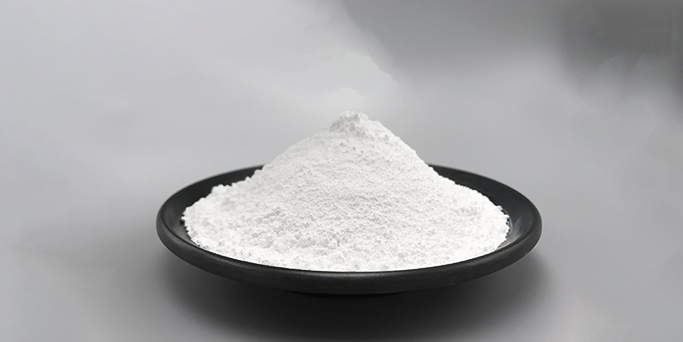
Fillers in powder coatings can not only reduce costs, but also play a great role in improving the performance of coating products. Such as improving the wear resistance and scratch resistance of the coating, reducing the sagging of the coating during melt leveling, improving corrosion resistance, and improving moisture resistance.
When selecting fillers for powder coatings, factors such as density, dispersion performance, particle size distribution, and purity need to be considered. Generally speaking, the higher the density, the lower the coverage of the powder coating; the dispersion of large particles is better than that of small particles; the filler is chemically inert and can avoid reacting with certain components of the powder formula such as pigments; the color of the filler should be as white as possible. The filler powder materials commonly used in powder coatings are mainly calcium carbonate, barium sulfate, talc, mica powder, kaolin, silica, wollastonite, etc.
Application of barium sulfate in powder coatings
Barium sulfate used as a pigment in coatings is of two types: natural and synthetic. The natural product is called barite powder, and the synthetic product is called precipitated barium sulfate.
In powder coatings, precipitated barium sulfate can enhance the leveling and gloss retention of powder coatings, and has good compatibility with all pigments. It can make powder coatings achieve ideal coating thickness and high powder coating rate in the spraying process.
Barite powder filler is mainly used in industrial primers and automotive intermediate coatings that require high coating strength, high filling power and high chemical inertness, and is also used in topcoats that require higher gloss. In latex paint, due to the high refractive index of barite (1.637), fine barite powder can have the function of translucent white pigment and can replace part of titanium dioxide in coatings.
Ultrafine barium sulfate has the characteristics of large filling amount, good brightness, good leveling, strong gloss retention and good compatibility with all pigments. It is the most ideal filler for powder coatings.
Application of mica powder in powder coatings
Mica powder is a complex silicate composition, the particles are scaly, heat resistance, acid and alkali resistance are excellent, and it affects the melt fluidity of powder coatings. It is generally used in temperature-resistant and insulating powder coatings and can be used as a filler for texture powder.
Application of Kaolin in Powder Coatings
Kaolin can improve thixotropy and anti-sedimentation properties. Calcined clay has no effect on rheological properties, but it can have matting effect, increase hiding power and increase whiteness like untreated clay, which are similar to talcum powder.
Kaolin generally has high water absorption and is not suitable for improving the thixotropy of coatings and preparing hydrophobic coatings. The particle size of kaolin products is between 0.2 and 1 μm. Kaolin with large particle size has low water absorption and good matting effect. Kaolin with small particle size (less than 1 μm) can be used for semi-gloss coatings and interior coatings.
Kaolin is also called hydrated aluminum silicate. According to different processing methods, kaolin can be divided into calcined kaolin and washed kaolin. Generally speaking, the oil absorption, opacity, porosity, hardness and whiteness of calcined kaolin are higher than those of washed kaolin, but the price is also higher than that of washed kaolin.
14 Applications of White Carbon Black
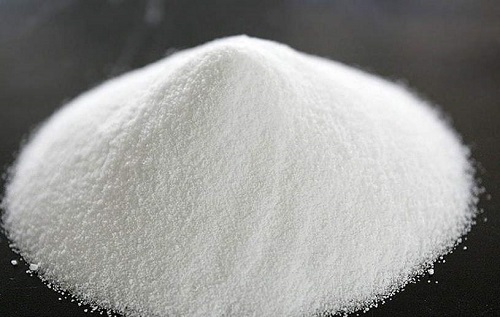
Application in tires
Silica is used as a reinforcing agent, and the largest amount is in the rubber field, accounting for 70% of the total amount. Silica can greatly improve the physical properties of the rubber, reduce the hysteresis of the rubber, and reduce the rolling resistance of the tire without losing its anti-skid property.
Application in defoamers
There are generally two types of fumed silica: hydrophilic and hydrophobic. The hydrophobic product is obtained by surface chemical treatment of the hydrophilic product.
Application in paint and coating industry
Silica can be used as a rheological additive, anti-settling agent, dispersant, and matting agent in coating production, playing the role of thickening, anti-settling, thixotropy, and matting. It can also improve the weather resistance and scratch resistance of the coating, improve the adhesion strength between the coating and the substrate and the hardness of the coating, improve the aging resistance of the coating, and improve the ultraviolet absorption and infrared light reflection characteristics.
Application in electronic packaging
By fully dispersing the surface-active treated fumed silica in the silicone-modified epoxy resin encapsulation glue matrix, the curing time of the encapsulation material can be greatly shortened (2.0-2.5h), and the curing temperature can be reduced to room temperature, so that the sealing performance of the OLED device is significantly improved
Application in plastics
Silica is also often used in new plastics. Adding a small amount of silica during plastic mixing will produce a significant reinforcement effect, improve the hardness and mechanical properties of the material, thereby improving the processing technology and the performance of the product.
Application in ceramics
Using fumed silica instead of nano-Al2O3 to add to 95 porcelain can not only play the role of nanoparticles, but also be a second-phase particle, which not only improves the strength and toughness of ceramic materials, but also improves the hardness and elastic modulus of the material. The effect is more ideal than adding Al2O3.
Application in the papermaking industry
In the papermaking industry, fumed silica products can be used as paper sizing agents to improve the whiteness and opacity of paper, and to improve oil resistance, wear resistance, hand feel, printing, and gloss. It can also be used for drying drawings, which can make the surface quality of paper good, the ink stable, and the back without cracks.
Application in toothpaste
Precipitated silica is the main type of friction agent for toothpaste at present. Precipitated silica has a large total specific surface area, strong adsorption capacity, more adsorbed substances, and uniform particles, which is conducive to improving transparency. Because of its stable properties, non-toxic and harmless, it is a good toothpaste raw material.
Application in cosmetics
The excellent properties of silica such as non-toxicity, odorlessness, and easy coloring make it widely used in the cosmetics industry. Silica is used in skin care products and cosmetics to make the skin feel smooth and soft ("ball bearing effect"), and the "soft focus effect" produced makes the light irradiated on the skin surface evenly distributed, so that wrinkles and blemishes on the skin are not easily detected.
Application of white carbon black in rubber shoes
White carbon black has high blackness and fine particles. The vulcanized rubber made with transparent white carbon black has high transparency and can improve the comprehensive physical properties of the rubber.
Application in the pharmaceutical industry
White carbon black has physiological inertness, high absorbability, dispersibility and thickening properties, and has been widely used in pharmaceutical preparations.
Application in ink
Silica is also used to control the flow of printer ink so that it cannot flow or sag arbitrarily to obtain clear printing. In beverage cans, it controls the use of high-speed spray coating. Fumed silica is also used as a dispersant and flow control agent in the toner of copiers and laser printers.
Application in pesticides
Silica can be used in pesticides for herbicides and insecticides. Adding a small amount of fumed silica and precipitated silica to the mixture of two common herbicides, dinitroaniline and urea, will prevent the mixture from agglomerating.
Application in daily necessities
Food packaging bags with silica added can keep fruits and vegetables fresh. White carbon black can also be used as a highly effective fungicide to prevent and treat various diseases of fruits; in the production of alcoholic beverages, adding a small amount of white carbon black can purify beer and extend the shelf life.
Powder surface modifier
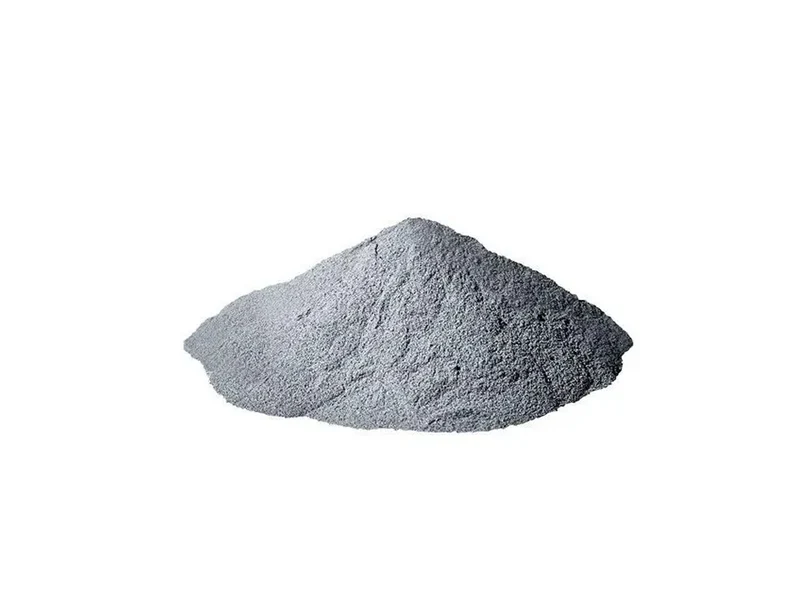
Surface coating modification means that the surface modifier has no chemical reaction with the particle surface, and the coating and the particle are connected by van der Waals force. This method is applicable to the surface modification of almost all kinds of inorganic particles. This method mainly uses inorganic compounds or organic compounds to coat the surface of the particles to weaken the agglomeration of the particles. In addition, the coating generates steric repulsion, which makes it very difficult for the particles to re-agglomerate. The modifiers used for coating modification include surfactants, hyperdispersants, inorganic substances, etc.
Surface chemical modification is completed by chemical reaction or chemical adsorption between the surface modifier and the particle surface. Mechanochemical modification refers to a modification method that changes the mineral lattice structure, crystal form, etc. through mechanical methods such as crushing, grinding, and friction, increases the internal energy of the system, increases the temperature, promotes the dissolution of particles, thermal decomposition, generates free radicals or ions, enhances the surface activity of minerals, and promotes the reaction or mutual adhesion of minerals and other substances to achieve the surface modification goal.
The precipitation reaction method is to add a precipitant to a solution containing powder particles, or to add a substance that can trigger the generation of a precipitant in the reaction system, so that the modified ions undergo a precipitation reaction and precipitate on the surface of the particles, thereby coating the particles. The precipitation method can be mainly divided into direct precipitation method, uniform precipitation method, non-uniform precipitation method, co-precipitation method, hydrolysis method, etc.
Capsule modification is a surface modification method that covers the surface of powder particles with a uniform and certain thickness of film. High-energy modification method is a method of modifying by initiating polymerization reaction by plasma or radiation treatment.
There are many types of surface modifiers, and there is no unified classification standard yet. According to the chemical properties of the surface modifier, it can be divided into organic modifiers and inorganic modifiers, which are used for organic surface modification and inorganic surface modification of powders respectively. Surface modifiers include coupling agents, surfactants, polyolefin oligomers, inorganic modifiers, etc.
The surface modification of powders is largely achieved through the action of surface modifiers on the surface of powders. Therefore, the formulation of surface modifiers (variety, dosage and usage) has an important influence on the modification effect of powder surface and the application performance of modified products. The formulation of surface modifiers is highly targeted, that is, it has the characteristics of "one key to open one lock". The formulation of surface modifiers includes the selection of varieties, determination of dosage and usage.
Varieties of surface modifiers
The main considerations for selecting surface modifier varieties are the properties of powder raw materials, the purpose or application field of the product, and factors such as process, price and environmental protection.
Dosage of surface modifiers
Theoretically, the dosage required to achieve monolayer adsorption on the particle surface is the optimal dosage, which is related to the specific surface area of the powder raw materials and the cross-sectional area of the surface modifier molecules, but this dosage is not necessarily the dosage of surface modifiers when 100% coverage is achieved. For inorganic surface coating modification, different coating rates and coating layer thicknesses may show different characteristics, such as color, gloss, etc. Therefore, the actual optimal dosage should be determined through modification tests and application performance tests. This is because the dosage of the surface modifier is not only related to the uniformity of the dispersion and coating of the surface modifier during surface modification, but also to the specific requirements of the application system for the surface properties and technical indicators of the powder raw materials.
How to use the surface modifier
A good method of use can improve the dispersion of the surface modifier and the surface modification effect of the powder. On the contrary, improper use may increase the dosage of the surface modifier and the modification effect will not achieve the expected purpose. The usage of the surface modifier includes the preparation, dispersion and addition methods, as well as the order of adding when using more than two surface modifiers.
What are the uses of titanium dioxide?
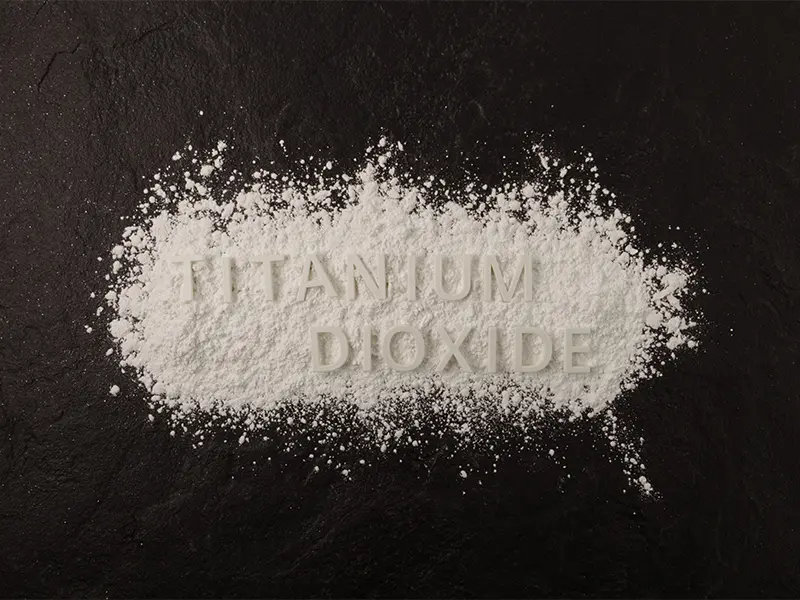
Titanium dioxide is an important inorganic chemical pigment, the main component of which is titanium dioxide. There are two production processes for titanium dioxide: sulfuric acid process and chlorination process. It has important uses in industries such as coatings, inks, papermaking, plastics and rubber, chemical fibers, and ceramics.
The particle size distribution of titanium dioxide is a comprehensive indicator, which seriously affects the performance of titanium dioxide pigment and product application performance. Therefore, the discussion of hiding power and dispersibility can be directly analyzed from the particle size distribution.
The factors affecting the particle size distribution of titanium dioxide are relatively complex. The first is the size of the original hydrolysis particle size. By controlling and adjusting the hydrolysis process conditions, the original particle size is within a certain range. The second is the calcination temperature. During the calcination of metatitanic acid, the particles undergo a crystal transformation period and a growth period. Control the appropriate temperature to keep the growing particles within a certain range. Finally, the product is crushed. Usually, the Raymond mill is modified and the analyzer speed is adjusted to control the crushing quality. At the same time, other crushing equipment can be used, such as: universal mill, air flow mill and hammer mill.
Titanium dioxide has three crystal forms in nature: rutile, anatase and brookite. The brookite belongs to the orthorhombic system and is an unstable crystal form. It will transform into rutile at above 650°C, so it has no practical value in industry. The anatase is stable at room temperature, but it will transform into rutile at high temperature. Its transformation intensity depends on the manufacturing method and whether inhibitors or promoters are added during the calcination process.
Titanium dioxide (or titanium dioxide) is widely used in various structural surface coatings, paper coatings and fillers, plastics and elastomers. Other uses include ceramics, glass, catalysts, coated fabrics, printing inks, roofing granules and fluxes. According to statistics, the global demand for titanium dioxide reached 4.6 million tons in 2006, of which the coating industry accounted for 58%, the plastic industry accounted for 23%, the paper industry accounted for 10%, and others accounted for 9%. Titanium dioxide can be produced from ilmenite, rutile, or titanium slag. There are two production processes for titanium dioxide: sulfate process and chloride process. The sulfate process is simpler than the chloride process and can use low-grade and relatively cheap minerals. Today, about 47% of the world's production capacity uses the sulfate process, and 53% of the production capacity uses the chloride process.
Titanium dioxide is considered to be the best white pigment in the world and is widely used in coatings, plastics, papermaking, printing inks, chemical fibers, rubber, cosmetics and other industries.
Titanium dioxide (titanium dioxide) has stable chemical properties and does not react with most substances under normal circumstances. In nature, titanium dioxide has three types of crystals: brookite, anatase and rutile. The brookite type is an unstable crystal form with no industrial utilization value. The anatase type (A-type) and the rutile type (R-type) both have stable lattices and are important white pigments and porcelain glazes. Compared with other white pigments, they have superior whiteness, tinting power, hiding power, weather resistance, heat resistance, and chemical stability, especially non-toxicity.
Titanium dioxide is widely used in coatings, plastics, rubber, ink, paper, chemical fibers, ceramics, daily chemicals, medicine, food and other industries.

